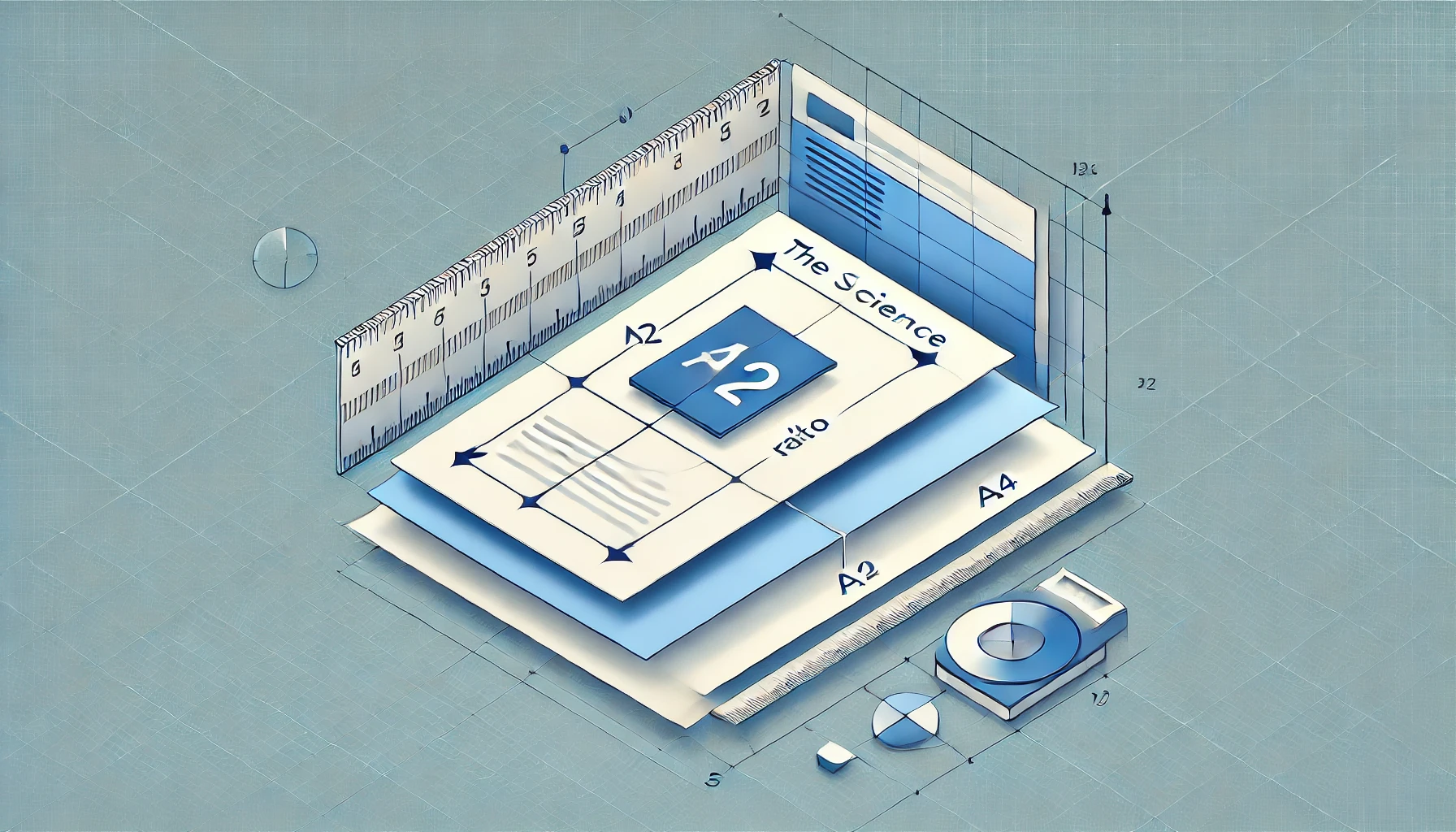Understanding the science behind paper dimensions opens up a world of precision and efficiency, particularly in fields like printing and graphic design. The key to this understanding lies in the aspect ratios that govern the dimensions of standard paper sizes. These ratios ensure that scaling up or down between sizes maintains the same proportions, preserving the integrity of visual designs across different formats.
This article dives into the mathematical foundation of paper dimensions, explaining the ubiquitous √2 ratio used in the ISO paper size system and its impact on our daily interactions with paper. By exploring how these dimensions are derived and their implications for practical use, readers will gain insights into not just the how, but the why of paper size standardization.
The Mathematical Basis of Paper Sizes
The ISO paper size system, widely adopted around the world, is based on an elegant mathematical principle: the aspect ratio of the square root of two (√2).
This ratio ensures that when a sheet of paper is folded in half parallel to its shortest sides, the halves also exhibit the same √2 ratio.
For instance, an A0 sheet of paper is 841mm by 1189mm, and when folded, becomes an A1 sheet, preserving the aspect ratio while halving the area.
This consistent ratio facilitates the scaling of images and text without distortion, making it highly efficient for various printing and design applications.
Historical Development of the √2 Ratio
The concept of using √2 as a basis for paper sizes was first proposed by the German scientist Georg Christoph Lichtenberg in 1786.
After encountering challenges with non-standardized sizes, Lichtenberg suggested that the dimensions of paper could be improved by adhering to a ratio that maintained its proportion upon being folded. This idea was revolutionary and paved the way for standardization in paper production.
It wasn’t until 1922, however, that Dr. Walter Porstmann formalized these ideas in Germany, leading to the adoption of the DIN 476 standard, which later evolved into the ISO 216 standard known today. This history highlights a significant stride towards efficiency in both paper manufacturing and usage.
Impact on Printing and Design
The adoption of the √2 ratio has greatly simplified many aspects of printing and design. For designers, this means that layouts need not be dramatically altered when scaling between sizes.
For example, a booklet designed on an A4 page can be easily adapted to an A5 or A3 format without any need for adjusting the text size or image proportions. This consistency is invaluable for maintaining brand integrity across various printed materials and reduces the workload involved in redesigning for different paper sizes.
In the printing industry, these standardized sizes mean that machines can be configured to handle multiple sizes more efficiently, reducing changeover time and waste.
Comparison with Other Size Systems
While the ISO system is prevalent globally, other standards like the ANSI (American National Standards Institute) system in the United States and the JIS (Japanese Industrial Standards) in Japan offer different approaches. The ANSI standard, for example, includes sizes such as Letter, Legal, and Ledger/Tabloid, which do not scale linearly as the ISO sizes do. These sizes, derived from historical usage and practical considerations rather than mathematical principles, can sometimes lead to increased paper waste and complications in design scalability.
Conversely, the JIS system, while similar to ISO in some respects, also includes unique sizes that cater specifically to Japanese industrial and consumer needs. Comparing these systems reveals that while the ISO standard’s mathematical elegance offers significant advantages in terms of scalability and waste reduction, regional standards like ANSI and JIS meet specific local requirements that might not be adequately served by a one-size-fits-all approach.
These sections delve into the technical and historical aspects of paper size standards, showcasing how a simple mathematical ratio has profound implications for the practical world of printing and design.
Practical Applications in Everyday Life
The principles behind paper sizes not only enhance professional practices in design and printing but also affect everyday activities.
In the office environment, the choice between an A4 and a Letter size can impact the compatibility of documents with binders and filing systems used regionally.
For students and educators, understanding paper dimensions can aid in creating visually balanced posters and presentation materials.
Even in personal use, selecting the right paper size can make DIY projects, like crafting custom planners or photo albums, more manageable and aesthetically pleasing.
Familiarity with how these sizes function helps individuals make more informed decisions that align with their specific needs, whether organizing documents, designing a brochure, or setting up a print job at home.
Conclusion
The journey through the science of paper dimensions reveals more than just the practicalities of choosing the right size for a given task—it illuminates a world where mathematics meets everyday life.
The √2 ratio, a simple yet profound mathematical principle, not only streamlines the design and printing processes but also ensures consistency and efficiency across various applications. By understanding and applying these principles, professionals and laypersons alike can enhance the functionality and appearance of their printed materials.
The history and logic behind paper sizes demonstrate the incredible impact that thoughtful standardization can have on our daily interactions with paper. Whether scaling a document for a presentation or selecting the perfect size for a new project, the insights gained from this exploration into paper dimensions empower us to make better, more efficient choices.
